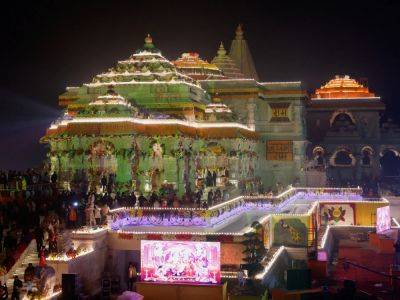Why the new Ram temple in Ayodhya is a turning point for India
The temple, built on the grounds of a demolished 16th-century mosque, is the symbol of India’s transformation into a Hindu nation.
January 22 is past us. For India, it was a big day. Its prime minister, Narendra Modi, said it was “not just a date on the calendar” but “the dawn of a new era”. It marked the beginning of “the expansion of consciousness – from the divine to the nation, from Ram to the entire nation” he said. On that day, he claimed, the foundation for India’s “next 1,000 years has been laid”.
Modi’s words welcoming the advent of “Ram Rajya” (divine rule) in India blatantly contradicted the secular principles enshrined in the country’s constitution. And yet, they were endorsed and repeated excitedly by most of the national media.
Following the prime minister’s lead, one respected national daily said January 22 heralded “the awakening of the collective consciousness of the nation”, while another announced that it was a moment for India to “define itself afresh”. Hindu divinity is central to the very of India, the argument went, so all Muslims, Christians and other minorities should simply accept its supremacy, and live their lives accordingly.
What led to January 22 being hailed as the dawn of a “divine” India was the consecration of an idol of Ram, one of the most revered Hindu gods, at a newly built temple in Ayodhya. Hindus believe Ram was born in this small town in the northern state of Uttar Pradesh, and thus consider it sacred.
There have long been hundreds of temples dedicated to Ram in Ayodhya. The Ram temple consecrated on January 22, however, is like no other shrine. It has been built on grounds where a Mughal-era mosque, called Babri Masjid, stood for centuries before it was torn down in 1992 by a







